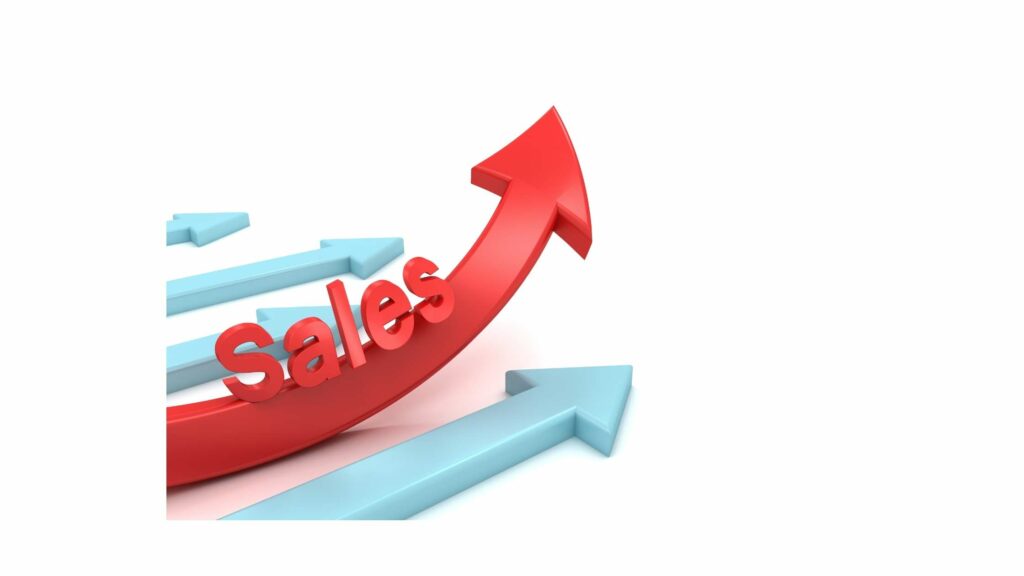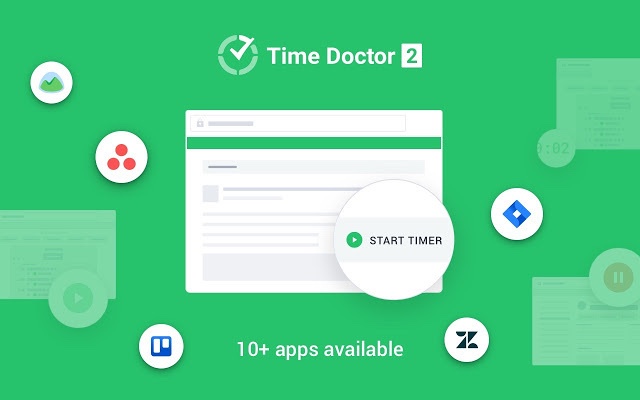Not sure how to measure sales rep productivity?
As sales is such an important department for any company’s bottom line, it’s essential that your sales reps are as productive as possible. However, accurately measuring sales productivity can be tricky.
But don’t worry.
In this article, we’ll answer all your queries on sales rep productivity.
We’ll first highlight the differences between sales efficiency and effectiveness to give you a clearer picture of what you should track. We’ll then discuss some useful sales performance metrics that you can use to monitor the sales performance of your reps.
This article contains:
- What Is Sales Productivity?
- 9 Sales Metrics To Track Sales Rep Productivity
- 3 Tips On How To Maintain Sales Rep Productivity
What is sales productivity?
Before we begin with how to measure sales rep productivity, let’s take a quick look at what sales productivity is. After all, you need to know what you’re tracking before you can actually track it, right?
Sales productivity is generally defined as the amount of revenue generated by your sales reps in a given time-frame. However, this productivity definition can be a bit vague and misleading.
Instead, an accurate definition would be:
Sales productivity is a function of sales efficiency and sales effectiveness.
What is sales efficiency and sales effectiveness?
Sales efficiency is a measure of how much work is done by a sales rep.
Sales effectiveness is a measure of how meaningful their work is towards your sales strategy.
Here’s a breakdown of each concept:
A. Sales efficiency
Sales efficiency is a quantitative measure of how much your reps are spreading awareness of your company and prospecting leads.
Remember, your reps can’t convert every sales opportunity into a new customer. Hence, the more individuals they contact, the higher their chances are of making a sale.
This volume of lead generation is generally tied to how effective they are.
B. Sales effectiveness
Let’s say, you’ve instructed your reps to contact a set number of opportunities per month.
They still need to convert these new business opportunities into clients, right?
Sales effectiveness is a qualitative measure of how well your sales reps are at identifying quality leads and converting a prospective lead into a sale.
So while sales efficiency focuses on ensuring that your reps generate enough leads, sales effectiveness deals with how well they’re able to deal with those leads.
Now that you know how sales efficiency and sales effectiveness constitute sales productivity, let’s get into how you can measure them:
9 sales metrics to measure the productivity of your sales reps

To measure the sales efficiency of a sales rep, you can use certain metrics called KPIs or Key Performance Indicators.
Here are some of the most powerful KPIs you can track:
1. Open/closed opportunities
This is one of the most useful sales activity metrics to track the efficiency of your field sales and online sales agents.
Open opportunities are individuals who are interested in your products or services but haven’t been converted yet. Closed opportunities are leads that you’ve closed after making a sale.
If a rep can’t meet the target number of open opportunities, it means they aren’t searching hard enough and generating as many opportunities as they should. Conversely, a low number of closed deals means the rep is struggling with conversions and can’t achieve the revenue target.
And while open and closed opportunities are both powerful metrics on their own, they’re an even more powerful sales metric when combined.
For example, comparing the number of open and closed opportunities tells you where your reps are lacking. If the number of open opportunities far exceeds the number of closed ones, it means that the rep is probably effective in lead generation but is struggling to close them.
As a sales manager, you can then instruct them accordingly to help them with improving sales productivity.
2. Average lead response time
Lead response time is the average time taken by a salesperson to respond to a lead after they’ve shown some interest. With this KPI, you can get a clear idea of which reps are proactively following up on their prospects.
You can calculate the average lead response time as follows:
Average Lead Response Time:

Remember, every sales organization is based on the principle of first come first serve. So the quicker a sales person responds to a lead, the greater their chances are of converting the lead and generating revenue.
3. Average handle time
Average Handle Time or AHT is the average time a rep takes to handle a sales call or interaction.
AHT includes the time taken by your rep during the call and for any follow-up activities scheduled after the call.
You can calculate AHT as:

With this KPI, you can find out how time-efficient a rep is and also how many customers they can handle over a given period of time. Minimizing AHTs is crucial to help you increase the volume of leads you reach out to. After all, the more leads you can attend to over a given period, the more opportunities you have for a conversion.
However, your reps shouldn’t leave the leads unsatisfied while trying to minimize AHTs and rush through the sales process. This will ultimately lead to a fall in sales performance, increased churn rate and a poorer company image.
4. Percentage of leads lost
While you won’t be able to convert every lead, you should try and minimize the leads you lose.
Why?
Losing leads translates to wastage of time and a loss in revenue.
Remember, your reps have invested a considerable amount of time and money into each lead. If they don’t convert, all of that would have been for nothing.
Leads lost can be classified as:
- Leads Lost to Competitors
This is when the lead ends up choosing another company over yours.
- Leads Lost to No Decision
This is when the lead is reluctant to purchase or goes silent after initial contact.
Here’s how you calculate the percentage of leads lost:

To track the sales productivity of your reps, you must monitor the number of leads every rep loses and the reason behind the losses. This will give you an idea of not only the volume of lead losses they’re responsible for, but also the reasons for them.
For example, if a rep loses leads mostly due to no decision, it means they’re not screening leads well and are pushing bad leads down the sales pipeline.
5. SQL-to-customer conversion rate
SQL stands for a Sales Qualified Lead.
They’re individuals who’ve expressed enough interest in your products/services and can be moved down the sales funnel.
However, not all SQLs end up getting converted.
The conversion of SQLs depends on how persuasive a rep is. A higher SQL-to-customer conversion rate usually signifies a more effective sales representative who can generate more revenue.
Here’s how you can calculate it:

6. Average sales cycle length
The length of a sales cycle is the total time taken from prospecting a lead to converting them.
The longer the length of a sales cycle, the more resource-intensive and inefficient it becomes.
The formula for this sales KPI is:

The sales performance of a rep is usually directly related to the average length of their sales cycles. The faster they can process a lead from initiation to conversion, the more sales revenue they can generate for your company.
However, remember that the average sales cycle length for your field sales agents are usually longer than your online agents. So don’t forget to consider this while tracking their productivity.
7. Win rate
The win rate of a rep is the ratio of the number of leads they converted to the total number of opportunities they pursued.
You can calculate the win rate of a rep as:

Win rate is an indispensable sales performance metric when you’re dealing with sales data analysis. This is because it helps you instantly see their effectiveness in generating revenue for your business.
8. Average deal size
The average deal size of a sales executive is the average value of each deal closed by them.
This sales productivity metric is calculated as follows:

Total Value of the Deals WonTotal Number of Deals Won
Generally, as a salesperson improves, so does the value of each of their closed deals. It signifies that they’re able to bring in more revenue from each lead.
9. Return on investment
The Return on Investment (ROI) of a rep is the ratio of the sales revenue they’ve generated to the amount of money you’ve invested in them.
You can calculate it on your sales dashboard or sales tool by using this formula:

The higher the ROI of a rep, the more cost-effective they are for your organization. Generally, companies look to ensure that their sales force is only populated with high ROI salespersons.
3 tips on how to maintain sales rep productivity

Sure, measuring the productivity of your reps can give you a fair idea of who is underperforming.
But, what after that?
How do you ensure that your reps remain productive on the job?
Here are some tips you can implement to ensure that every sales rep remains productive:
1. Set realistic targets.
One of the best ways to measure sales force productivity is to see if your reps have been meeting their targets.
However, those sales goals must be realistic for them to be any good.
Assigning an impossible sales target will result in two things:
- Your reps will never be able to meet their sales activity targets.
- Their motivation and confidence levels will fall as a result of always missing their sales quota.
As a sales manager or sales director, ensure that you set realistic, individual sales targets – instead of unreasonable blanket targets for everyone.
Always look at each rep’s capabilities and past performance when determining their goals to make the process more employee-friendly. You can also consult your sales leader to get a better insight into the capabilities of every rep.
For example, a junior salesperson obviously can’t handle the number of sales that an experienced agent handles. Hence, setting a smaller sales target for them makes sense.
2. Hold regular training sessions
Learning is an inevitable part of growing.
And one way to always stay ahead of your competition is by holding regular sales training sessions and coaching classes.
It helps keep your reps updated on the latest trends in sales and can also help you build on the data you have collected via your metrics.
For example, if you find that most of your reps are struggling with their conversion rates, holding a training session on how to boost conversions will definitely benefit them.
Coaching classes also promote communication with your sales team, as you can directly address their concerns and doubts regarding your sales strategy. This promotes a healthier workplace atmosphere where reps feel comfortable expressing themselves.
3. Use an employee productivity tool
One of the best ways to boost productivity is by creating an environment that gives your sales team the resources they need to be as productive as possible.
And to do that, all you need is an employee productivity tool like Time Doctor!
What is Time Doctor?

Time Doctor is a popular employee productivity tool used by large companies as well as SMBs.
It’s one of the easiest ways to measure the productivity of every salesperson and give your sales force the focus it needs to be at their productive best.
Time Doctor will help you:
- Effortlessly see how well your reps are spending their work hours.
- Prevent team members from idling during working hours.
- Generate detailed, real-time productivity reports to help your reps identify where they can improve
- Monitor productivity across multiple workplace apps like Zendesk and Salesforce.
- Pay your reps for the hours they put in with the built-in Payroll feature.
Wrapping up
If you were confused about how to measure sales rep productivity, don’t be!
Just use the metrics we listed here to effortlessly measure how well your sales reps are doing.
But remember, just monitoring how well they’re doing isn’t enough. You need ways to actively maintain your sales productivity too.
Just use the tips and tools mentioned in this article to ensure that your sales team gets all the support they need to stay productive and close even more deals for your company in the future.
So, which productivity metric fits your sales strategy?
Let us know in the comments section below.

Liam Martin is a co-founder of Time Doctor which is software to improve productivity and help keep track and know what your team is working on, even when working from home.


